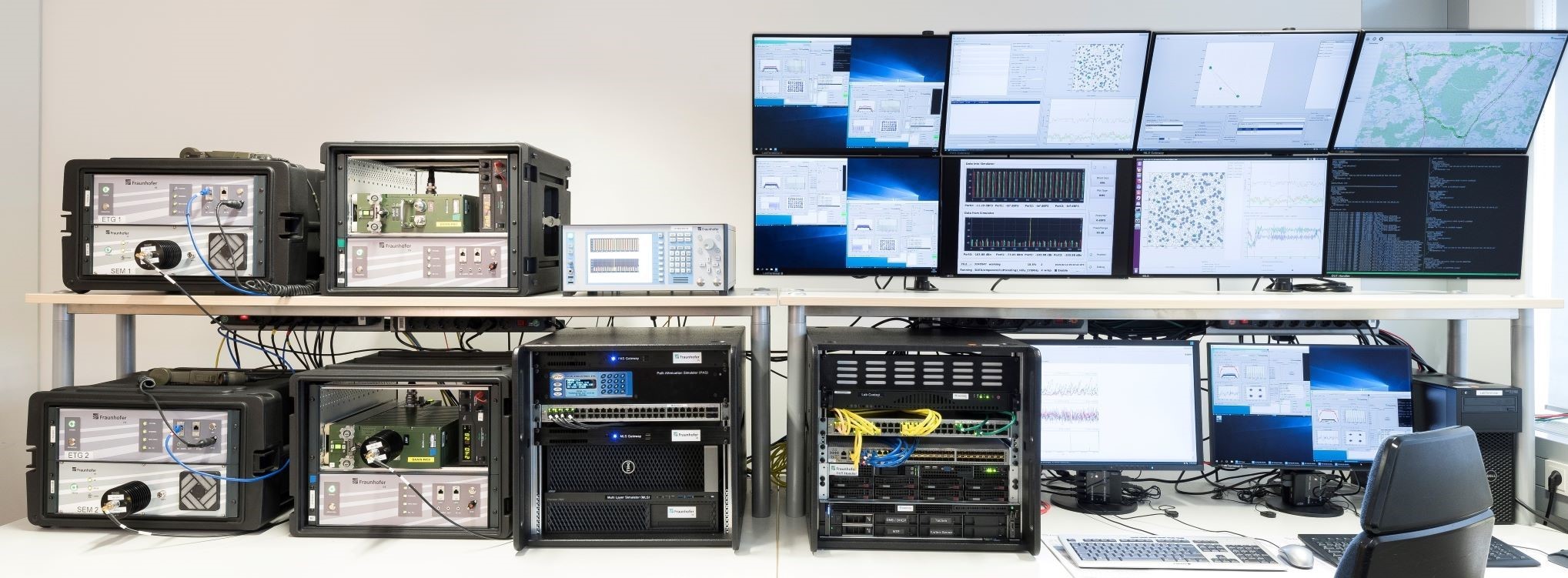As part of the SumO project, Fraunhofer IIS together with the Bundeswehr Technical Center for Information Technology and Electronics (WTD 81) creates the design concept and develops specific test and measurement equipment as well as an automated sequence control system for a simulation, test, and reference environment for mobile operations. Fraunhofer IIS is contributing its expertise and project experience acquired in the field of radio channel modeling and emulation.
The aim is to set up a permanent, flexible test infrastructure to be used for various validation and verification tests. SumO – the simulation, test, and reference environment for mobile operations – operates across different laboratories and locations and can integrate existing test and analysis facilities.
